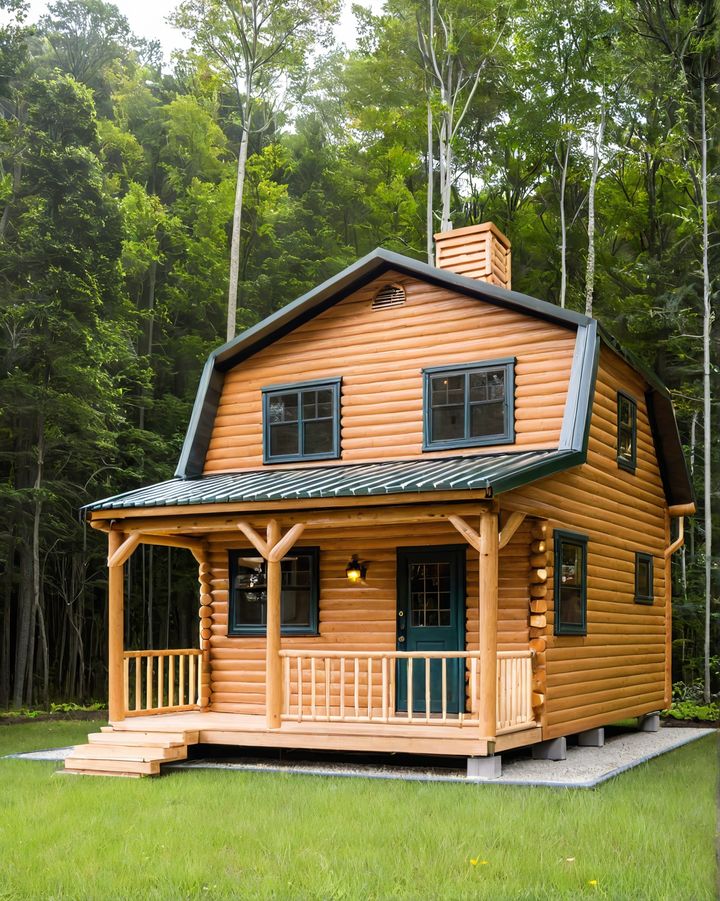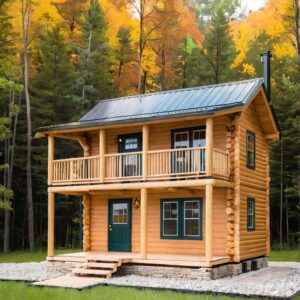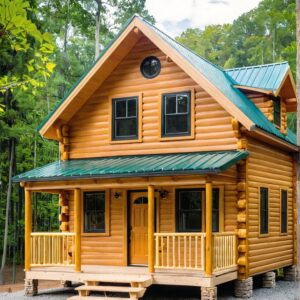Wooden Cabin House
Wooden Cabin house are a type of building structure primarily made from timber or wood. These houses have been used for centuries in various cultures around the world due to the availability of wood as a building material. Today, wooden Cabin houses remain popular for both aesthetic and practical reasons. Here are some key aspects of wooden houses:
1. Types of Wooden Houses
- Log Cabins: These are often associated with rustic living, using large logs for walls. They are simple and durable, often found in rural or forested areas.
- Timber Frame Houses: These houses feature a framework of large wooden beams, with the spaces in between filled with materials like brick, straw, or clay.
- Wooden Frame Houses: This is the most common type of wooden house, where wooden studs (vertical framing members) are use to create a skeletal structure. The walls are then filled with insulation and covered with wood, drywall, or other materials.
- Contemporary Wooden Houses: These houses might blend modern design with wooden materials, focusing on energy efficiency and sustainability while maintaining a sleek and sophisticated look.
2. Advantages of Wooden Houses
- Sustainability: Wood cabin house is a renewable resource, and when sourced responsibly, it can be an environmentally friendly building material.
- Aesthetics: Wooden homes offer a natural and warm appearance, creating a cozy and welcoming atmosphere.
- Energy Efficiency: Wood is a natural insulator, which can help maintain comfortable indoor temperatures and lower heating and cooling costs.
- Durability: With proper maintenance, wooden houses can last for many years. Wood also tends to age gracefully, developing a patina that many people find appealing.
3. Challenges of Wooden Houses
- Maintenance: Wooden houses require regular maintenance to protect them from weathering, rot, termites, and other pests.
- Fire Risk: Wood is a combustible material, which makes fire safety a major consideration in wooden house design. However, fire retardant treatments and modern fireproofing methods can mitigate this risk.
- Cost: Depending on the type of wood and design, wooden houses can be more expensive to build than houses made from concrete or steel, especially in areas where timber is less abundant.
4. Modern Wooden House Design
- Eco-Friendly Features: Many modern wooden houses incorporate sustainable features such as solar panels, rainwater harvesting systems, and high-efficiency insulation to reduce their environmental impact.
- Minimalist Aesthetics: In urban and suburban areas, architects are designing wooden houses with clean lines and minimalist interiors that make use of open space and natural light.
- Hybrid Materials: Some modern wooden houses combine wood with other materials like steel, concrete, or glass for a more contemporary look and enhanced structural strength.
5. Popular Regions for Wooden Houses
- Scandinavia: Norway, Sweden, and Finland have long traditions of wooden architecture, with many houses built in the form of log cabins or timber-frame structures.
- Canada and the US: In the northern parts of these countries, especially in rural areas and places with cold climates, wooden houses are commonly use due to their insulating properties.
- Japan: Japanese wooden houses, often built with timber framing techniques, have been a staple of the country’s architectural heritage for centuries, emphasizing simplicity and harmony with nature.
Would you like to explore a particular style or region of wooden houses?



Reviews
There are no reviews yet.